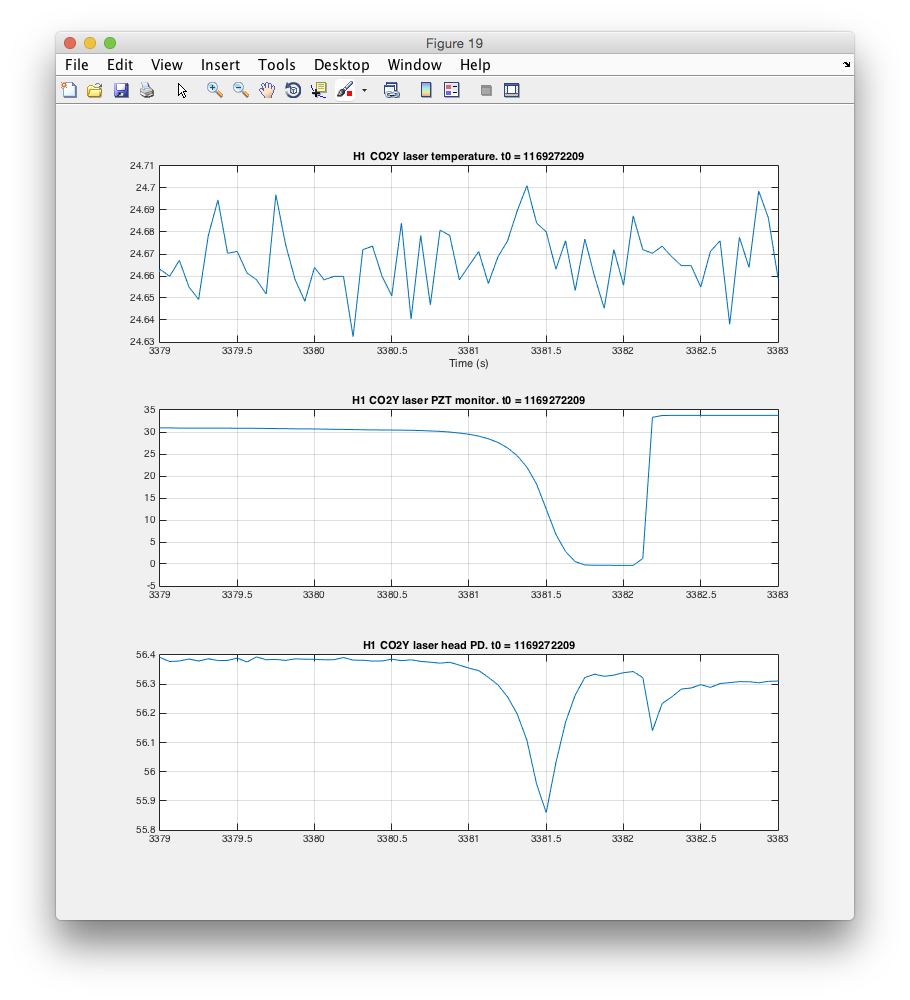Looks like the CO2Y laser lock point may be lost due to small jumps in the current that kicked the pzt out of its place. This is the first time I've seen such behavior (for myself anyway). This TCS guardian node is currently tied to the intent bit and can potentially kick us out of observe.
Plotted again with the full story of transitioning data points, as well as with IFO range to see when the lock transitions happen, and the TCSY flow rate. The laser power transits appropriately at lock loss and again at lock aquisition with a small spike in some TCSY channels. It's the big transit of some of the channels at the beginning of the 2nd lock that is the weird.
And here's a plot of the next 2 lock loss/acquisition events wrt TCSY. This time all signals did what is expected, no TCSY laser mode transistions with subsequent servo corrections.
I think the CO2 laser lock loss is due to the servo being set to an absolute DC value of power. When locking, the CO2 laser PZT scans its full range and we monitor the output power. We then chose a locking point based on an output power that is roughly half way between the minimum and maximum powers in a mode transition. When the loop is locked, the difference between the CO2 laser output power and the set point becomes the error signal for the PZT (with some gain, low pass filtering and integration).
This keeps the laser output power very stable but suffers from a problem that should the long term efficiency (over periods of days to weeks) of the laser changes (get better or worse), the mode-transition to power output power relationship may drift up or down. A mode hop will then approach the set point power. At some point, this becomes too close, the PZT voltage:output power relationship will become nonlinear and we'll lose lock.
Betsy and I think this is probably what happened here. This is backed up by the new locking point (laser power set point) being set a bit lower than previous.
The attached plot shows the laser output power dropping in advance of the PZT voltage. In fact, you can see the laser go through a mode-hop before the PZT reaches zero volts.
This is a relatively uncommon but currently unavoidable event. My recommendation is that we next characterize how frequently this does occur.





